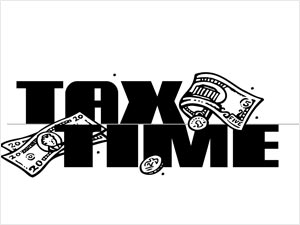India is on track for an economic recovery in the fiscal year ending March 2022, according to S&P Global Ratings.
In S&P’s view, the Indian banking system’s performance is likely to start improving materially in fiscal 2023, trailing an economic recovery of 10 per cent in fiscal 2022.
Consistently good agriculture performance, a flattening of the Covid-19 infection curve, and a pick-up in government spending are supporting the economy, the global credit agency said in a report, ‘Cross-Sector Outlook: India’s Escape From Covid.’
“India needs many things to be right for its recovery to continue. Most significantly, the country needs to quickly and thoroughly vaccinate most of its 1.4 billion (140 crore) people,” the report said.
The agency cautioned that the emergence of yet more contagious Covid-19 variants with the potential to evade vaccine-derived immunity presents a major risk to this recovery. As does the possibility of early withdrawal of global fiscal stimulus.
“Near-term prospects are positive. With a sustained decline in national confirmed Covid-19 cases allowing for a gradual relaxation of formerly stringent epidemic control measures, high-frequency economic indicators continue to show improvement,” the report said.
The agency opined that the Indian government’s recently released Budget will also support the recovery, with higher-than-previously-expected expenditures for fiscals 2021 and 2022.
India’s improving growth prospects are critical to its ability to sustain the higher deficits associated with its more aggressive fiscal stance, it added.
Transition risk
S&P believes the economy still faces important risks as it transitions from stabilisation to recovery.
“We estimate that India faces a permanent loss of output versus its pre-pandemic path, suggesting a long-term production deficit equivalent to about 10 per cent of GDP,” per its assessment.
The agency observed that localised containment measures in India are replacing nationwide lockdowns. This has rejuvenated demand and removed supply bottlenecks and labour shortages, supporting a sharp recovery in infrastructure use.
The pace of recovery varies widely. Airports are still struggling with most flights grounded, S&P said.
The agency assessed that utilities are faring better, bolstered by regulated, contracted or availability-based returns that protect their operating cash flows despite an earlier fall in unit demand.
“We believe counterparty credit risks and receivable delays pose the biggest risk for utilities (including renewables) while benign funding conditions assuage liquidity risk,” the report said.
Likewise, a faster-than-expected earnings recovery has lowered downside risk for rated corporates.
Commodity prices
S&P is of the view that an increase in commodity prices and a revival of domestic demand after lockdowns were eased have driven upside earnings surprises.
Changes in consumer choices, for example, a preference for personal transport for health-safety reasons, have helped sectors such as automobiles.
In S&P’s view, a sustained earnings rebound is key for ratings to stabilise; roughly one quarter of ratings are still on negative outlook.
On the other hand, proactive refinancing by speculative-grade corporates has materially reduced refinancing risk in 2021.
Banking front
On the banking front in India, the agency estimates the system’s weak loans ratio at 12 per cent of gross loans and credit cost to remain elevated at 2.2 per cent-2.7 per cent.
Faster economic recovery and steps taken by the Reserve Bank of India and the Indian government to cushion the effect of the economic crisis have helped ease the stress on bank balance sheets.
On a positive note, banks are building capital buffers and reserves to deal with the Covid crunch.
S&P observed that finance companies’ performance has been a mixed bag. It expects polarisation between Indian finance companies to persist.












